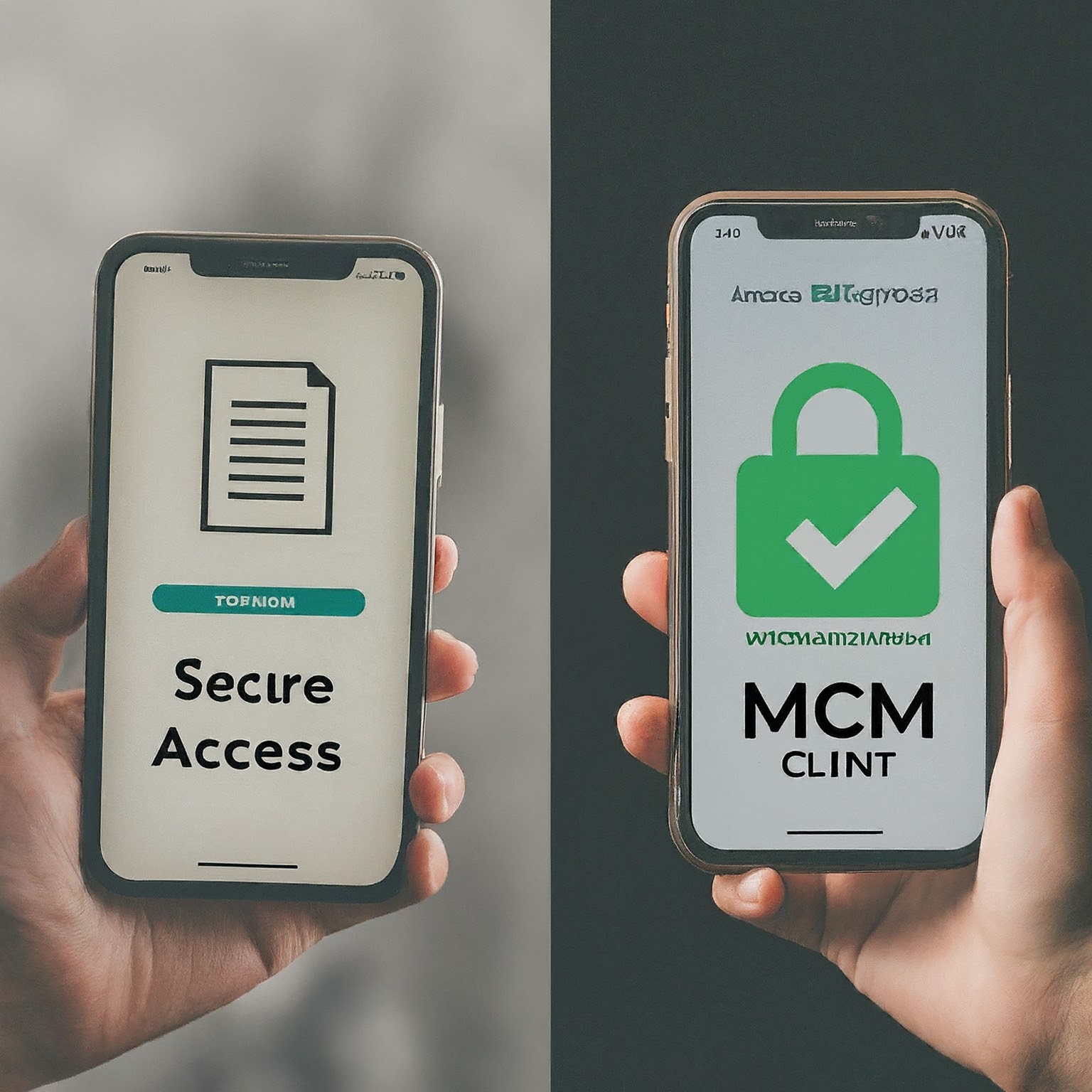In today’s increasingly mobile world, businesses rely heavily on smartphones and tablets for employee productivity. However, ensuring secure access to corporate data and applications on these devices presents a significant challenge. Enter the MCM client, a crucial tool in the realm of Mobile Content Management (MCM). This in-depth guide delves into the world of MCM client, exploring its purpose, functionalities, benefits for organizations, potential drawbacks, and alternative mobile device management (MDM) solutions.

Unveiling the MCM Client: What is it and How Does it Work?
The MCM client, also referred to as an MCM agent, is a software application deployed on mobile devices like smartphones and tablets. This app acts as a bridge between the device and a Mobile Content Management (MCM) solution implemented by the organization. Here’s a breakdown of its core functions:
Secure Access Management: The MCM client enforces secure access policies, ensuring only authorized users and devices can access sensitive corporate data and applications. This can involve multi-factor authentication, PIN requirements, or device encryption.
Content Delivery and Management: The MCM client facilitates the secure delivery and management of corporate content on mobile devices. This might include documents, presentations, email attachments, or specific applications approved for business use.
Remote Data Wiping: In case of a lost or stolen device, the MCM client allows IT administrators to remotely wipe sensitive data from the device, mitigating potential security breaches.
Device Compliance Enforcement: The MCM client can enforce device compliance policies established by the organization. This can include enforcing password complexity requirements, restricting app downloads from unauthorized sources, or ensuring software updates are installed on time.
How Does an MCM Client Benefit Organizations?
By deploying an MCM client alongside an MCM solution, organizations can reap several benefits:
Enhanced Data Security: The MCM client safeguards sensitive corporate information by controlling access, data encryption, and remote data wipe capabilities.
Improved Productivity: Secure access to corporate resources on mobile devices empowers employees to work efficiently, regardless of location.
Simplified Device Management: The MCM client streamlines the management of mobile devices within an organization. IT administrators can remotely enforce policies, distribute content, and monitor device health.
Reduced Costs: By preventing data breaches and ensuring device compliance, the MCM client can potentially reduce IT support costs and mitigate security risks.
Potential Drawbacks to Consider with MCM Client Implementation
While advantageous, implementing an MCM client comes with some potential drawbacks:
User Resistance: Some employees might perceive restrictions imposed by the MCM client as an inconvenience. Clear communication and training regarding the benefits of mobile security can help alleviate concerns.
Device Compatibility Issues: Not all MCM client solutions might be compatible with every device type or operating system. Organizations need to ensure compatibility with their existing mobile device ecosystem.
Integration Complexity: Integrating the MCM client with existing IT infrastructure can require technical expertise. Smaller organizations might find this challenging.
Potential Privacy Concerns: The level of access and control granted by the MCM client could raise privacy concerns among employees. Transparency regarding data collection and usage policies are crucial.
Alternative Mobile Device Management (MDM) Solutions
MCM client is one component within the broader realm of Mobile Device Management (MDM) solutions. Here’s an overview of some alternatives:
Unified Endpoint Management (UEM): UEM offers a more comprehensive approach, managing not just mobile devices but also laptops, desktops, and other endpoints within an organization.
Containerization: This approach creates a secure, virtualized workspace on a mobile device dedicated to corporate applications and data, ensuring separation from personal use.
Mobile Application Management (MAM): MAM focuses specifically on managing and securing the deployment of corporate applications on mobile devices.
The choice between these solutions depends on the specific needs and resources of the organization.
Choosing the Right Mobile Device Management Solution
Organizations should consider the following factors when selecting a mobile device management solution:
Security Requirements: Evaluate the level of data security required and choose a solution that offers adequate protection measures.
Device Landscape: Consider the types of mobile devices used within the organization and ensure compatibility with the chosen solution.
IT Expertise: Assess internal IT resources and choose a solution with a manageable technical implementation and ongoing management complexity.
Budgetary Constraints: Compare the costs associated with different MDM solutions and choose one that aligns with the organization’s budget.


